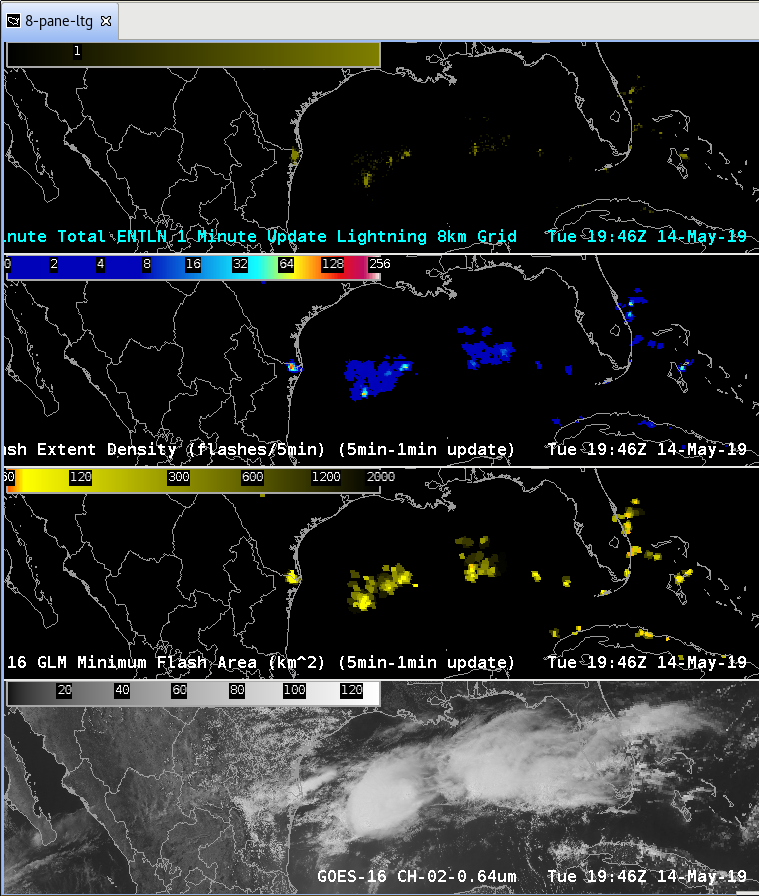When life hands you lemons (or for that matter, a bleak, moisture-starved convective environment draped over the entire CONUS) we can still make lemonade on this particular day by focusing on the Gulf of Mexico.
A question I’m asking all week when evaluating experimental products is: “How does this meaningfully improve upon what’s already operationally available?” My initial impression of GLM was that it’s merely duplicating efforts of ENTLN (except of course over the ocean where it’s unquestionably important given the lack of ground sensors exist). One of the better examples of this I’ve seen is below. In the panels below, looking south of Mobile, we see a much weaker signal in ENTLN total lightning grids compared to off the TX coast, whereas Flash Extent Density shows much more similarity between the two areas.
Another thing that was pointed up during discussion this morning: ENTLN pulse detection efficiency is *highly* variable across even the interior CONUS. This is because sensors are more clustered around metropolitan areas and therefore the number of pulse detections (and to a lesser extent, flash detections) can fluctuate quite significantly for completely non-meteorological reasons. So, I’m becoming increasingly convinced that GLM data might be a more useful sanity check than I previously thought.
Part of this experiment is to evaluate minimum flash area (botttom pane). To be continued…
#MarfaFront

